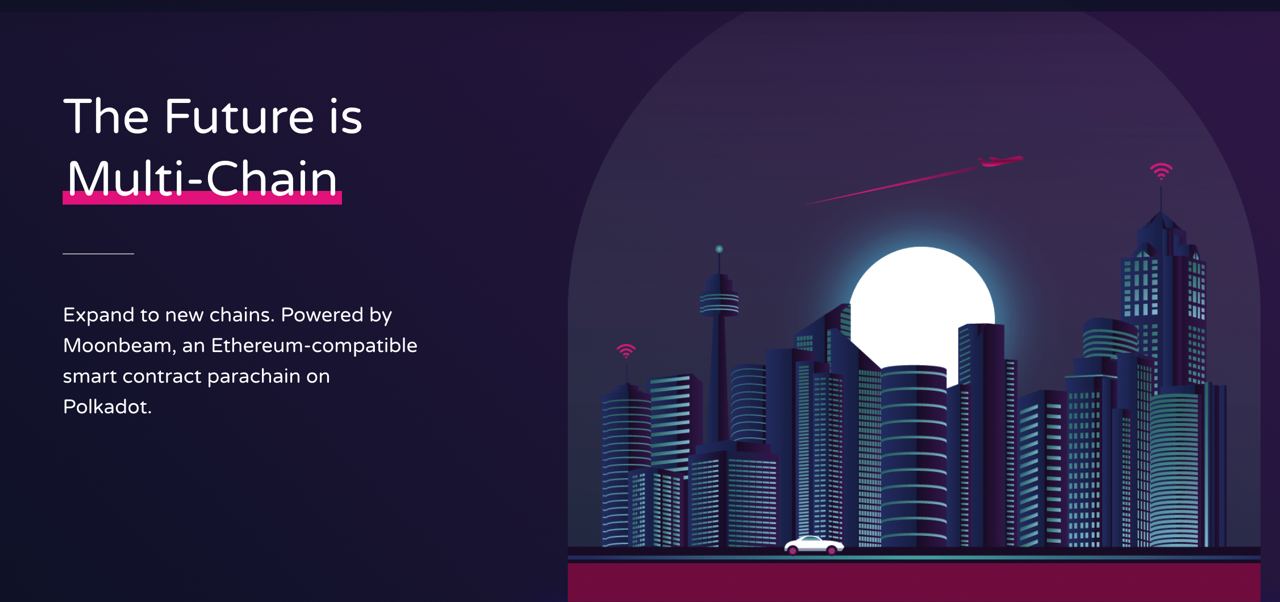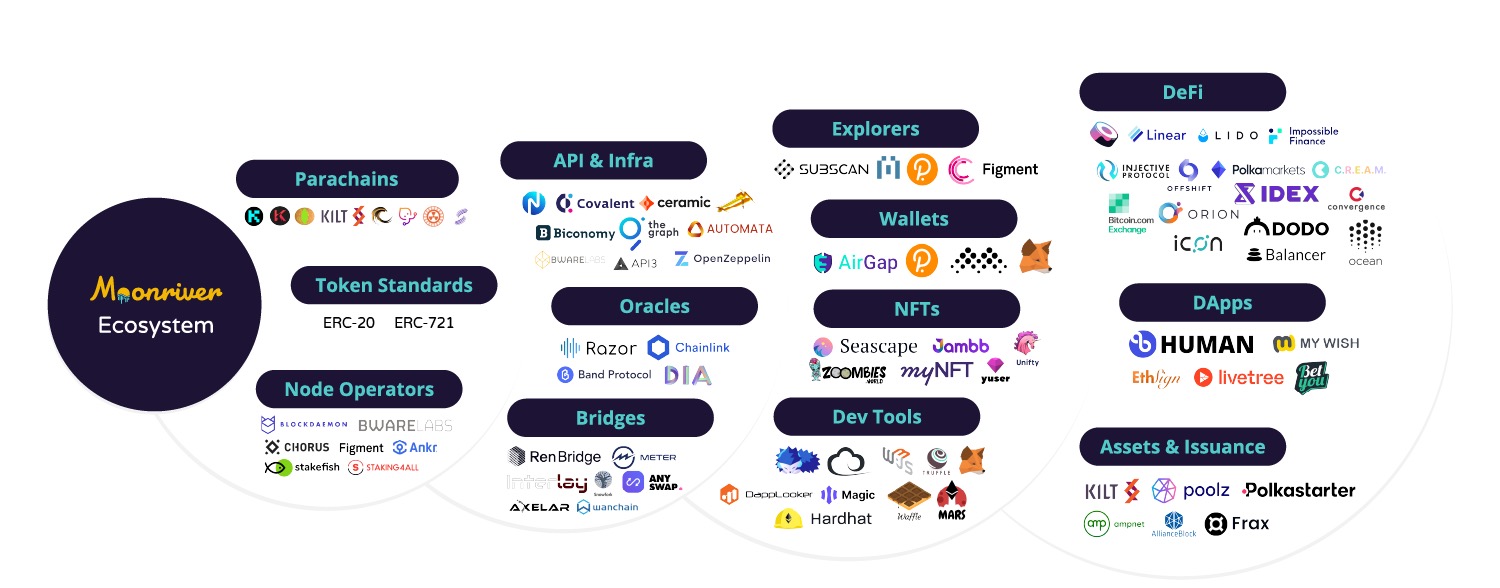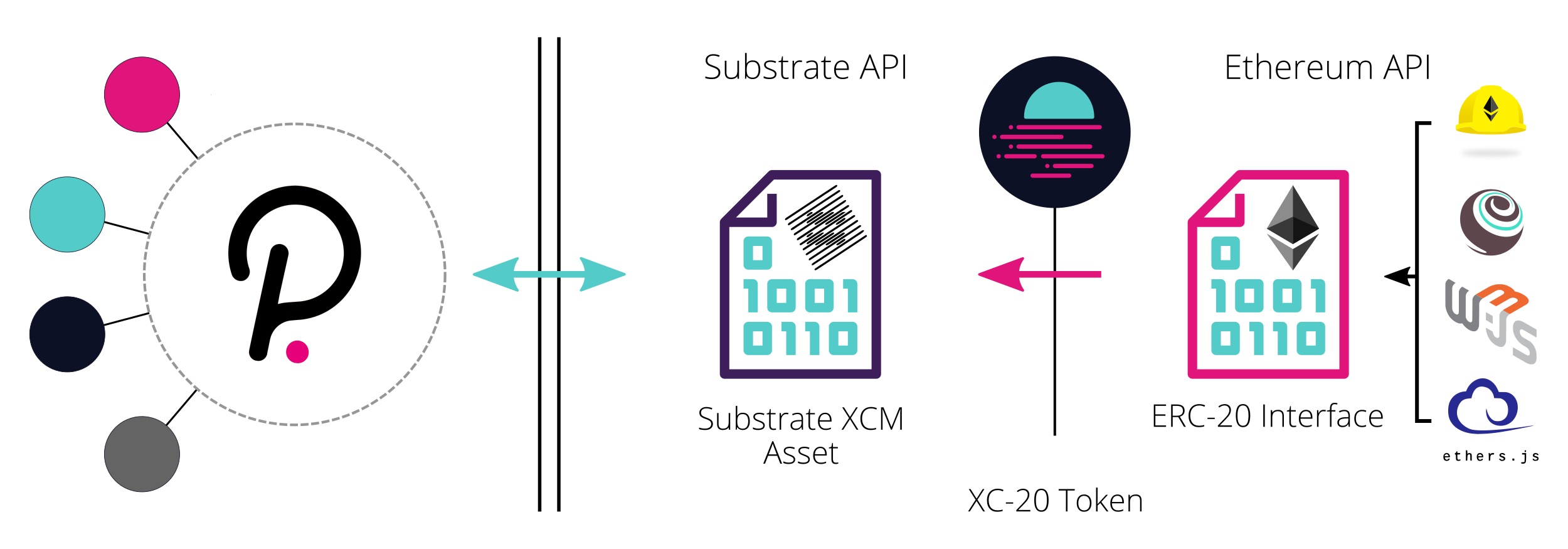Why are we still bullish on Moonbeam?
With all the quotas of the Take Flight community activities unlocked, GLMR, the native token of Polkadot’s first parachain Moonbeam, ushered in the expected short-term bottoming out on February 20.
Behind the large fluctuations in the secondary market are heated discussions within the Moonbeam community. What is more interesting is that there are two completely different voices in the current community discussion on GLMR, one of which is naturally the panic that is still pervasive, but in addition to the panic, we can also see that many people are still rational Analyzing the fundamentals of Moonbeam, it is believed that the project still has considerable long-term value.

We are more inclined to the second voice, so we also want to talk about our views on Moonbeam at this special time node. In our opinion, the existence of smart contract parachains such as Moonbeam has greatly reduced the number of application projects entering the Polkadot ecosystem. Threshold", and then release the value potential of the entire Polkadot system. Of course, no one can say how the price of GLMR will go in the short term, so the following content will mainly focus on the fundamentals of the project, and there will be no secondary Inferences about Market Performance.
Moonbeam — Polkadot’s first parachain
To understand Moonbeam's positioning, we need to start with Polkadot's architecture.
Taking the "multi-chain era" as the blueprint, Polkadot has built a set of "relay chain + parallel chain" architecture with "open cross-chain" as the core feature. However, since the Polkadot relay chain itself does not support smart contracts, Therefore, if the project party wants to develop applications based on Polkadot, generally speaking, there are three paths to choose:Take a parachain; rent a parallel thread; build Dapps based on other parachains that support smart contracts.
Considering that the first path has higher requirements on the overall strength and development level of the project, there is no certainty when the second path will be implemented. For most projects, the third path is the most convenient way to enter the Polkadot ecosystem , An effective way, that is, choose a parallel chain (such as Moonbeam) that supports smart contracts to directly develop Dapps.
Combined with the actual auction results of Polkadot, most of the projects that bought parachains and launched the main network in the early stage are also such smart contract parachains. The existence of these low-level projects has greatly reduced the threshold for application projects to enter the Polkadot ecosystem. The community truly conveys its will through voting, broadening the openness of Polkadot.
Moonbeam is the first smart contract parachain within the Polkadot ecosystem.In January of this year, Moonbeam took the lead in launching the main network in the "second slot" through intensive integration and debugging, and became the first fully operational parallel network in the Polkadot ecosystem. chain.
According to Moonscan data (as of February 22), the Moonbeam mainnet has produced 460,000 blocks and a cumulative transaction volume of 2.64 million since its launch more than a month ago.
Defi Llama data shows that the current value of Moonbeam's total locked assets has reached 175 million US dollars. From the perspective of ecological categories, various types of applications such as stable coins, DEX, lending, derivatives, and cross-chain bridges are being actively deployed to Moonbeam, and an ecological closed loop is rapidly forming. In addition to participating in regular on-chain staking, users holding GLMR can also freely exchange or participate in market making in agreements such as Zenlink and StellaSwap, and can also conduct mortgage lending in agreements such as Moonwell and Minterest. , cBridge, Synapse and other cross-chain bridges can freely enter and exit the ecology.
From a structural point of view, Moonbeam is a smart contract parachain based on Polkadot Layer0, which can be used as the underlying soil for various application development.In terms of hierarchical positioning, it should be classified as Layer 1 similar to Solana and Avalanche, but there is a difference in the verification logic.
In terms of utility, Moonbeam can also play the role of Ethereum Layer 2 in a broad sense.Undertake the value overflow of the Ethereum ecology. The reason for saying this is that the biggest feature of Moonbeam is that it has 100% compatibility with the Ethereum Virtual Machine (EVM) and supports the Solidity development language. Developers in the Ethereum ecosystem can deploy existing applications on Moonbeam with minimal code adjustments. Some smart contracts, or build new Dapps from scratch in the familiar EVM development environment.
Internally and externally, what are the advantages of Moonbeam?
With the collective explosion of the new generation of public chains in the second half of 2021, the valuation imagination of the Layer 1 track has been greatly improved. Affected by this, many projects in the Polkadot ecosystem that intend to become parachains have also begun to set foot in the field of smart contract carrying. With both internal and external competition intensifying, why are we still optimistic about the competitiveness of Moonbeam, carrying the mission of external projects entering Polkadot and further expanding the Polkadot ecology?
From the perspective of the Polkadot ecosystem, Moonbeam's current main advantages over other smart contract parachains are reflected in the three levels of team, performance (EVM compatibility), and ecological progress.
One is the team. The development team of Moonbeam is PureStake. The team received a financing of 6 million US dollars in March last year. Coinbase, Binance and other star institutions can be found in the list of investors.
The most impressive thing about PureStake in the past is its forward-looking and delivery capabilities. The team proposed the idea of adding EVM compatibility to Polkadot as early as the first quarter of 2020. It seems to be even more "in the distance"; as for the delivery capability, Moonbeam's ability to launch the mainnet first in the second slot is the best proof.
The second is performance. Moonbeam is a smart contract parachain with the highest EVM compatibility in the entire Polkadot ecosystem. Users who participated in the crowd loan before may notice a detail. When filling in the crowd loan reward receiving address, Moonbeam is the only one that allows users to fill in the ERC-20 address (20 bytes) instead of Polkadot’s standard Substrate address (32 characters). section), this is because Moonbeam achieves address compatibility and realizes "address unification" across Polkadot and Ethereum.
It is worth mentioning that Moonbeam's compatibility with the EVM development environment is not static, but will keep up with the latest changes in the development environment of the Ethereum ecosystem. This week, Moonbeam has just added support for the four EIP content under the Ethereum "London Upgrade" through the Runtime 1200 upgrade, including the familiar new-generation fee pricing mechanism (EIP 1559), which also makes Moonbeam a member of the Polkadot ecosystem. Currently the only smart contract parachain compatible with "London Upgrade" related content. The reason why it is so extreme is that Moonbeam wants to continuously provide developers with the most familiar development environment and reduce any possible development habit friction.
The third is the ecological progress. In this regard, Moonbeam can be described as "one of the best" in the Polkadot ecosystem. At present, there are not a few projects that have announced integration or are about to integrate into Moonbeam, including not only Chainlink, The Graph, Sushiswap, Balancer and many other well-known projects in the Ethereum ecosystem, but also native projects such as Zenlink, StellaSwap, Solarflare, and Moonwell , in terms of ecological scale alone, Moonbeam is no less than many external well-known public chains.

Just past Valentine’s Day, Curve Finance, the absolute leader in DeFi, also announced the launch of Moonbeam, which shows how attractive the Moonbeam ecology is at present.
Compared with the external public chain, Moonbeam's biggest reliance is Polkadot, the Layer0,All parachains can share the security and decentralization of the relay chain, while using Polkadot's cross-consensus message format (XCM) to achieve seamless interoperability with other parachains specializing in different directions. If each chain has its own "dialect", XCM is like a common "language" between different chains, helping receivers and senders of information on different chains to keep information synchronized, knowing what they should do after receiving information What's the reaction.

As the multi-chain structure becomes more and more stable, the competition on the cross-chain track has become increasingly fierce. Currently, cross-chain bridges are commonly used solutions for asset cross-chain scenarios, but past stories have told us many times that cross-chain bridge services inevitably have liquidity fragmentation and security concerns. At the beginning of the year, V God, the co-founder of Ethereum, also mentioned that although the future will definitely be "multi-chain", the cross-chain bridge, a solution with basic security restrictions, may not be an ideal path. In the long run, XCM, a high-level solution starting from a consensus format, may be the mainstream in the future.
Note: For the theory of XCM, please refer to this article by MoonbeamPopular science analysis。
Of course, it will still take some time for XCM to be fully developed, but Moonbeam has combined its theory with some advanced landing attempts on its chain - XC-20. XC-20 is a Token standard that is benchmarked against ERC-20. It not only combines the advantages of the native interoperability of Substrate assets, but also allows developers to let pre-compiled contracts (Ethereum API) interact through the familiar ERC-20 interface, so First, developers will be able to integrate XC-20 standard assets using the tools of the Ethereum development environment.
In addition to the core advantages of the structure,As a Layer 1 that carries smart contracts and Dapps, Moonbeam also has three major advantages: low enough threshold, large enough wealth effect, and simple enough competitive environment.

The low enough threshold is reflected in multiple levels, such as the highly restored Ethereum development environment, and the extremely low contract deployment and debugging costs brought about by high performance, etc.; the strong enough wealth effect is more directly reflected, currently in the Moonbeam network The real-time rate of return of staking GLMR is as high as 34%. As for the competition environment is simple enough, it means that Moonbeam does not currently have the awareness of coercing the will of the entire network. The success or failure of the project depends entirely on market competition. Chain ecology, this form of competition is actually rare.
On the whole, Moonbeam has relatively clear development advantages both internally and externally. Because of this, we believe in the long-term value of Moonbeam and believe that it has the potential to open up the development pattern of the entire Polkadot ecosystem.
The story of Polkadot needs Moonbeams to tell
In past exchanges with friends in the industry, we found that different groups have distinct differences in their views on Polkadot.
Friends who are not familiar with Polkadot tend to be confused about some unique concepts of the ecology, such as relay chains, parachains, auctions, crowd lending, etc. These cognitive "obstacles" make them interested in Polkadot However, in the eyes of friends who have been following Polkadot for a long time, some technological innovations unique to the ecology always make them full of praise, such as the Substrate framework, fork-free upgrades, and the aforementioned XCM, etc.

As one of the ecosystems with the most active developers for a long time, Polkadot (and Kusama) has achieved many industry firsts in the past development process. Its open cross-chain architecture allows developers to further expand the project boundaries. A higher-level combination of contracts to achieve mutual empowerment and explore greater market space and value potential.
However, as a new ecology, Polkadot, like other Layer0 and Layer1, also needs to go through a relatively long user education process, and those innovations of Polkadot in turn further increase the learning cost of new users, making this process extremely long .
The cleverness of Moonbeam is that the project clearly sees the difference between the needs of the future and the present.In the long run, the multi-chain pattern is gradually taking shape. Polkadot's structural advantages make it expected to become the central hub of the multi-chain world in the future, so Moonbeam chooses to develop directly based on Polkadot; but at this stage, Ethereum is still the entire encryption platform. The center of the world, EVM is currently the most mainstream development environment.
If you want to expand the ecology, you have to integrate EVM. If you want to stand out from many EVM compatible chains, you must achieve the most extreme compatibility. This is the development purpose of Moonbeam at the current stage, and one project after another has moved in. It also proves that This selection by Moonbeam was a success.
Looking forward to the future, it is certain that more projects will enter the Polkadot ecosystem through Moonbeam as a window. When these users survive, some users will subtly perceive the advantages brought by Polkadot in daily use, and finally understand and agree with Polkadot, and Moonbeam will continue to expand in this process and complete its own value discovery.



